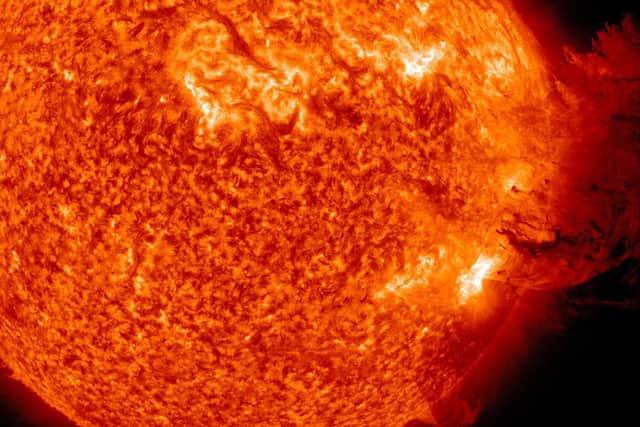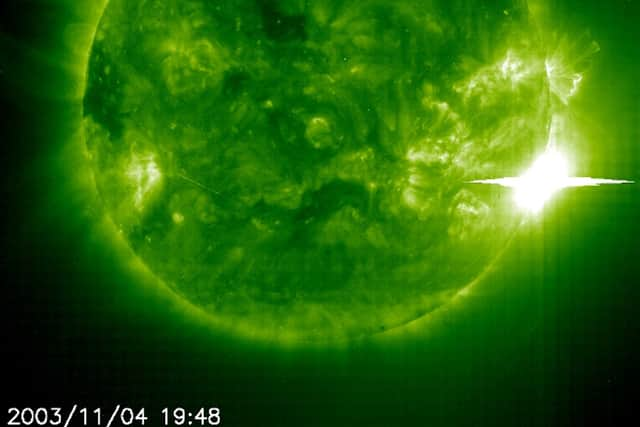Solar Storm Liverpool 2022: what is a solar storm, when will it reach Earth and what should I expect?
and live on Freeview channel 276
A solar storm has been confirmed to take place today (August 3) and has been confirmed to hit earth’s magnetic field, leaving some Liverpool residents concerned what effects it may have on the planet.
The solar storm was predicted by the National Oceanic and Atmospheric Administration’s Space Weather Prediction Centre (SWPC) after observing that "gaseous material is flowing from a southern hole in the sun’s atmosphere,” triggering a G-1 geomagnetic storm.
Will the solar storm hit Liverpool?


Advertisement
Hide AdAdvertisement
Hide AdIt will but there is nothing to be alarmed about regarding this cosmic event, as the SWPC have cited it will be “weak.”
A G-1 geomagnetic storm has the capabilities to cause minor fluctuations in power grids and slight disruption to satellite communications such as mobile phones and GPS systems.
But nothing that will cause danger to life. The energetic emissions from a solar storm, such as gamma-rays, are unable to penetrate the Earth’s atmosphere.
Can I see the solar storm in Liverpool?
Unfortunately, it’s almost impossible to see a solar storm or a solar flare with the naked eye; it would effectively be like staring at the sun.
Advertisement
Hide AdAdvertisement
Hide AdSpecialist equipment is needed to view these events, which tracks light emitted during a flare. Radio and optical emission from flares can be observed with telescopes on Earth.
There are some circumstances though that these can be visible through auroras that take place in the night sky, with the most notable example being the Northern Lights (Aurora Borealis).
Liverpudlians who may wish to see any of these cosmic events though only need to visit Leighton Observatory, who this evening will have one of their open evenings.
What is a solar storm?


According to NASA, solar storms or any solar activity is associated with Space Weather and can be divided into four main components:
- Solar flares impact Earth only when they occur on the side of the sun facing Earth. Because flares are made of photons, they travel out directly from the flare site, so if we can see the flare, we can be impacted by it.
- Coronal mass ejections, also called CMEs, are large clouds of plasma and magnetic field that erupt from the sun. These clouds can erupt in any direction, and then continue on in that direction, ploughing right through the solar wind. Only when the cloud is aimed at Earth will the CME hit Earth and therefore cause impacts.
- High-speed solar wind streams come from areas on the sun known as coronal holes. These holes can form anywhere on the sun and usually, only when they are closer to the solar equator, do the winds they produce impact Earth.
- Solar energetic particles are high-energy charged particles, primarily thought to be released by shocks formed at the front of coronal mass ejections and solar flares.
Advertisement
Hide AdAdvertisement
Hide AdWhen a CME cloud plows through the solar wind, high velocity solar energetic particles can be produced and because they are charged, they must follow the magnetic field lines that pervade the space between the Sun and the Earth.
Therefore, only the charged particles that follow magnetic field lines that intersect the Earth will result in impacts.
What has caused today’s solar storm?
Today’s solar storm has been caused by a “hole” in the sun’s upper atmosphere where a star’s electrified gas (or plasma) is cooler and less dense.
Such holes are also where the sun’s magnetic field lines, instead of looping back in on themselves, beam outward into space.
This enables solar material to surge out in a torrent that travels at speeds up to 1.8 million miles per hour (2.9 million kilometres per hour),
Comment Guidelines
National World encourages reader discussion on our stories. User feedback, insights and back-and-forth exchanges add a rich layer of context to reporting. Please review our Community Guidelines before commenting.
